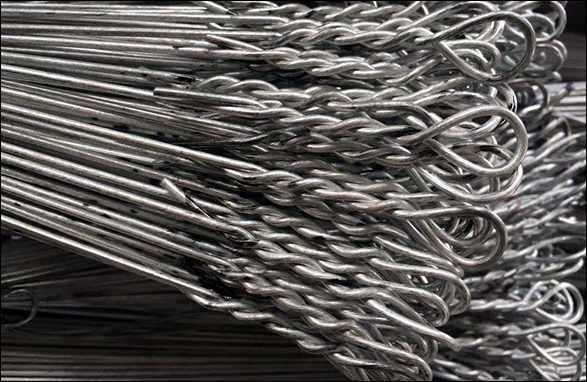A Brief Guide to the Types of Baling Wire
Finance
In the recycling and manufacturing industries, the use of baling wire is near universal. Although originally developed for agricultural purposes, modern industrial baling wire sees far more use in the containment of things other than hay. Good baling wire is strong, flexible and resistant to corrosion. It is used to wrap up and contain materials in space-efficient, easy-to-transport bales. It is often used in conjunction with self-tying baling machines, which compress materials before tying them up and spitting them out in neat cubes that can be loaded onto pallets. This article is a brief guide to the different kinds of baling wire used in manufacturing and recycling facilities today.
Black Annealed Wire
Black annealed wire is used in applications where wire needs to be both strong and flexible. The annealing process involves the rapid heating and cooling of the wire. This makes it far more resilient to physical degradation when bent. Black annealed box wire is extremely popular in the manufacturing industry, where it is used to bind pallets of unevenly shaped components or products.
Galvanized Wire
Galvanization is a metallurgical process in which an alloy containing iron, such as steel, is dipped into molten zinc that has been heated up to around 450°C. As the metal heats up to the same temperature as the zinc, a chemical reaction takes place. This creates a layer of zinc-iron alloy that is extremely resistant to corrosion.
Some steel baling wire is galvanized in order to protect it against corrosion. Steel contains iron, which is prone to oxidization when it is exposed to oxygen and water. This process is commonly known as rust, and it can impact the durability and strength of the wire considerably. If, for instance, a bale of recycled material was stored in high moisture conditions for a long time, untreated baling wire might eventually snap. Galvanized baling wire is extremely resistant to rust corrosion.
High Tensile Wire
Although all commercially available baling wire is able to resist high stresses, some applications require more than the usual level of toughness. Recycled metal products, for instance, can exert huge amounts of stress on baling wire. High tensile baling wire is often galvanized and annealed, and is typically offered in a thicker gauge than more general-purpose wire. Tensile strength is measured in PSI – Pounds per Square Inch. Good, high-tensile baling wire will have a PSI of around 75,000.
Single Loop Wire
The simplest and cheapest baling wire is fastened with only a single loop and it must be tied together by twisting. This kind of wire is suitable for applications in which bales are tied by hand. It is not generally compatible with self-tying baling machines.
Double Loop Wire
Double loop baling wire has a loop at each end. This makes it possible for self-tying baling machines to automatically join the loops to form a strong connection. This kind of wire is popular in the recycling field, where self-tying baling machines have become an industry standard.
